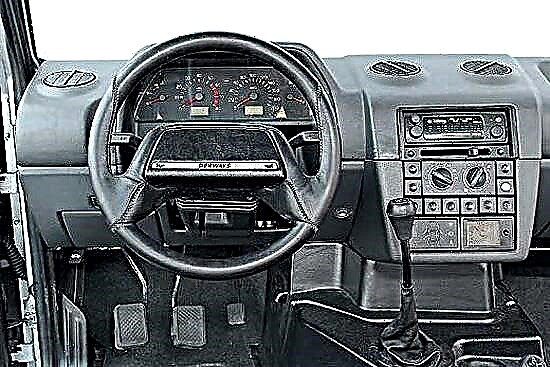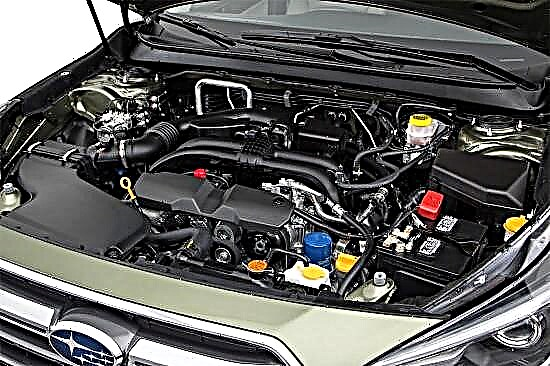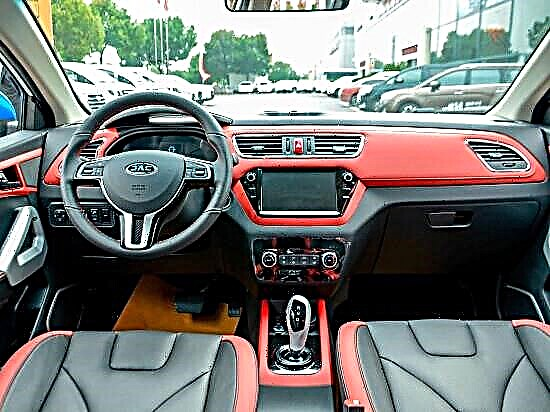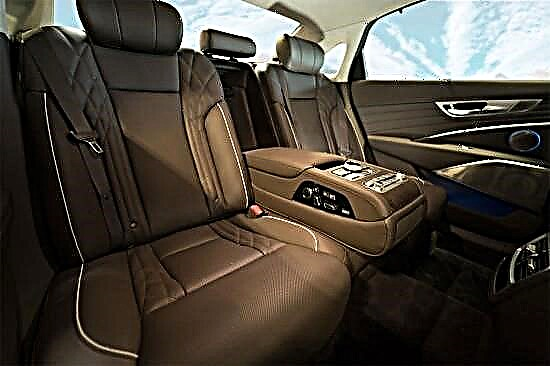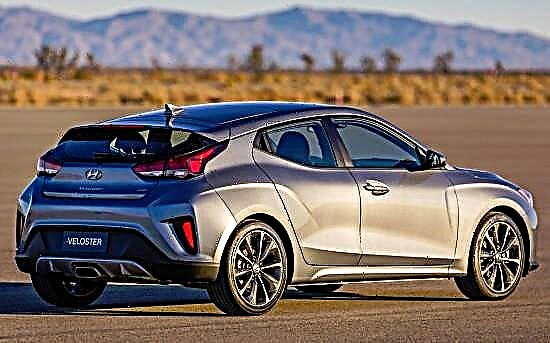Ratings of cars and auto products
Reviews, comparisons & tips for motorists
At the end of the twentieth century, the idea was widespread to combine two or more functions in one device. Thus, both universal gadgets and cars - SUVs appeared. They combined the power and cross-country ability of SUVs, as well as the compactness and economy of urban cars, occupying a niche in the middle. At the same time, SUVs, unlike crossovers, were simpler and more affordable.
Classic crossovers Chevrolet Captiva and Opel Antara
The need to create a universal car arose in the nineties of the last century. It was then that the first models of universal off-road vehicles came out. Noticing the growing popularity, a large concern General Motors decided to create its own crossover. In 2006, the Chevrolet Captiva was released. As the first experience of GM in a new class, it met the company's expectations and became popular in the markets of different countries.
In the same year, another SUV from the GM sub-brand, Opel Antara, appeared. Like Captiva, Antara was based on the common base of Theta. Both SUVs had the same chassis system and belonged to the same class, but, nevertheless, they had quite a lot of differences - otherwise GM would not have produced two versions under its own leadership. The situation was confused by the sales managers, each of whom praised "his" SUV, unable to give specific characteristics. The first comparisons were made by journalists, expressing the differences.
Description Chevrolet Captiva
Initially, the car was developed as a model of the Daewoo brand, all the same at the GM concern. Design began in 2004 and soon the car became a Chevrolet, first named S3X and then Captiva. In the same year, the SUV visited the Paris Motor Show as a concept car.
The Chevrolet Captiva is a five- or seven-seat SUV made by GM's South Korean division. Based on the Theta platform. It went on sale in 2006. The first generation has undergone revision - in 2010 the second was released. The new Captiva has changed in design, also with an improved interior and a redesigned chassis: new engine options and a completely different chassis with improved stiffness and stability have been added.
The third generation of the Chevrolet Captiva, which is current in our time, differs from the previous one, first of all, in improved ergonomics and functionality. The body has become more solid and received new headlights, and among other equipment, you can find a keyless entry system and heated seats.
The third generation of the Chevrolet Captiva SUV
Description Opel Antara
The prototype of the car was presented in 2005, and the finished version rolled off the assembly line in 2006 - a little later than the Captiva. In addition, both cars are based on the same base, which is their structural similarity. In addition, both lines - Antara and Captiva - received identical engines. On this, perhaps, their common features end.
Having analyzed the advantages and disadvantages of the first generation Antara, Opel produces the following. During the production of the second version of the car, complaints and suggestions of motorists were taken into account. So, the new generation received pronounced crossover features and more impressive physical data. The interior has become more comfortable, and the car as a whole has become better equipped. The second generation Opel Antara "learned" to monitor road markings and blind spots, independently select a parking space and make it. In addition, Antara has a special safety system that allows you to avoid obstacles in the lane. The second generation of the Opel SUV entered the mass sale in 2014.
Opel Antara 2015
Comparison of Captiva and Antara
With a cursory study of the descriptions of cars, it becomes clear that Chevrolet and Opel are structurally similar - a common base, the same components of the propulsion system and engine options. In addition, the appearance of the latest generation as Captiva and Antara are almost identical and they are easy to confuse.
If we compare the characteristics and reviews, it becomes clear that the Chevrolet Captiva and Opel Antara have many differences in terms of operation, ergonomics and functionality. This is best revealed by testing in real life. Both cars are produced and sold, including in Russia, which makes it possible to use statistical data - SUVs are used in the same market that we understand.
Complete set
Chevrolet Captiva is available in several trim levels, which are combined with three engines (including one diesel), two transmissions (manual and automatic) and five- and seven-seat body versions. The minimum equipment is as follows:
- Gasoline engine with a volume of 2.4 liters and a capacity of 167 horsepower;
- Four-wheel drive and manual six-speed transmission;
- Body with five or seven seats, including the driver;
- Six airbags, curtains - installed only on the front 2 rows;
- Air conditioning;
- Built-in computer;
- Audio system;
- Remote controlled central locking;
- Electrical package including adjustable and heated mirrors;
- Heated seats;
- ESP;
- Descent assistance system.
Such a complete set of Chevrolet Captiva will cost the driver about 1,565,000 rubles.
As the budget increases, versions receive:
- Diesel engine 2.2 liters and 184 liters. from. or gasoline for 3 liters and 249 liters. from.;
- Six-speed automatic transmission;
- Passive cruise control;
- Climate control to replace the air conditioner;
- Parktronic;
- Additional electronic functions such as adjustable seats.
For all upgrades, the driver will pay up to 1,885,000 rubles - this is the price of the maximum configuration. It is worth noting that it can only have 5 seats, as it has a sporty positioning. The most powerful Captiva engine provides acceleration to 100 km / h in 8.6 seconds and a top speed of 198 km / h with a consumption of 8 to 15.5 liters of fuel per 100 kilometers.
A complete list of the functionality of the initial assembly of the Opel Antara:
- Gasoline engine 2.4 liters with a capacity of 170 horsepower;
- Six-speed manual transmission with four-wheel drive;
- Front and rear halogen fog lights;
- Heating and electric mirrors;
- Adjustable steering column;
- Heated front seats;
- Electronic windows;
- Airbags - front and side for the first row of seats;
- ABS;
- ESP;
- Brake force distribution system;
- Audio system;
- Optional on-board computer for an additional fee;
- A package of options that includes cruise control, rear and front parking sensors.
The minimum equipment Opel Antara costs about 1,300,000 rubles. At the same time, we can safely say that this car has a better ratio of price and functionality than the Chevrolet Captiva in the initial configuration.
The most expensive version of the Opel Antara is primarily distinguished by its powerful engine. With a volume of 3 liters, its horsepower is 249. Antara in this configuration consumes about 10.5 liters per 100 kilometers. It accelerates to hundreds in 8.6 seconds. In addition to driving performance, the best equipment has a more sophisticated and equipped interior, including all systems that are optional in other versions. The cost of this version of Antar is approximately 1,900,000 rubles.
Price
Chevrolet Captiva has a narrower price range, which indicates little variability in selection. Opel Antara offers more affordable and more expensive solutions, the properties of which correspond to the cost.Thus, Antara is more desirable both for those who like to save money in an affordable package, and for those who like convenience in a more expensive one.
Specifications
Body parameters Chevrolet Captiva:
- Length - 4673 mm;
- Width - 1868 mm;
- Height - 1756 mm;
- Clearance - 200 mm.
Body parameters Opel Antara:
- Length - 4482 mm;
- Width - 1662 mm;
- Height - 1704 mm;
- Clearance - 200 mm.
As can be seen from the characteristics, the Chevrolet Captiva has a more massive body, which affects both the space in the cabin and safety - a larger and heavier car better protects passengers and the driver. The captiva also needs this size in order to accommodate two additional seats.
Appearance
The Captiva has a classic design that makes it look like many SUVs and crossovers. The brutal features add confidence to the already relatively large body. Chevrolet hardly reminds of the kinship with Korean cars - the appearance of the Captiva looks more like a typical product of American or European designers.
Chevrolet Captiva has a classic design and a massive body
The design of the Opel Antara gives off a futuristic mood - the reason for this is the original bends of the headlights and lines on the body. This SUV looks more like a modern Asian car with unusual features. They are largely designed for the younger generation.
Opel Antara design gives a futuristic mood
Salon
As with the exterior, the interior of the Chevrolet Captiva can be described as "neutral". Smooth surfaces with simple lines, reliable joints of soft plastic, high seating position - all this makes the Captiva's interior comfortable without frills. The instruments on the panel are convenient to use as they are rationally located. The audio and cruise control buttons are located in the recesses of the leather steering wheel.
The exterior of the interior of the Chevrolet Captiva can be called neutral
As for the seats, they surprise with their comfort. The seats of the first row are quite comfortable, but this applies to the second and third to a greater extent. Even located literally in the trunk, the third row allows an adult to sit comfortably. Also, in addition to a more spacious interior, the Chevrolet Captiva has a more capacious trunk compared to the Opel Antara.
Chevrolet Captiva has a more capacious trunk
In addition to many advantages, the interior of the Captiva also has a couple of complaints: you need to get used to the shape of the leather seats - they have a short cushion and weak backrests. In terms of ergonomics, the size of the computer display could be larger, albeit for an additional fee - the designers had to remove the drawer above it. In addition, the large diameter steering wheel also takes some getting used to.
In the Opel Antara saloon, unlike the competitor, one feels not comfort and tranquility, but bustle and drive. In addition, the orange color of the interior lighting is rather unusual. There are more disadvantages to Antar's interior than advantages. This is the poor ergonomics of the display, the control to which is located at the bottom of the panel, and the general difficulty of understanding the systems. The door handles are also inconvenient, to which you have to reach from a sitting position.
Inside the Opel Antara, there is a bustle and drive
Compared to Captiva, Antara's salon causes a lot of inconvenience and has almost no advantages. In addition, the corresponding number of adults can hardly fit into a five-seater and only Opel - the rear row of seats is quite cramped and low.
The trunk of the Opel Antara is not very roomy
Driving performance
Captiva and Antara have an identical chassis. In addition, there is almost no difference between the engines that are installed on them - the differences during the test drive are mainly due to the different weights of the cars.
All available engines are of good quality and reliability. They are undemanding to fuel and are quite productive - the driver can overcome moderate off-road terrain or carry rather heavy loads in the trunk.
At the same time, a negative point that unites both suspension systems is impressive fuel consumption. Despite the average passport consumption of 11 liters per 100 km, you need to be prepared for all 20.
Outcome
Captiva and Antara are very different cars. The former is more suitable for lovers of traditional comfort, functionality and appearance, while the latter will appeal to extravagant drivers.

